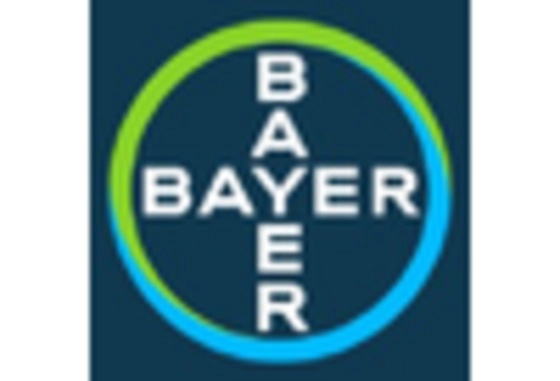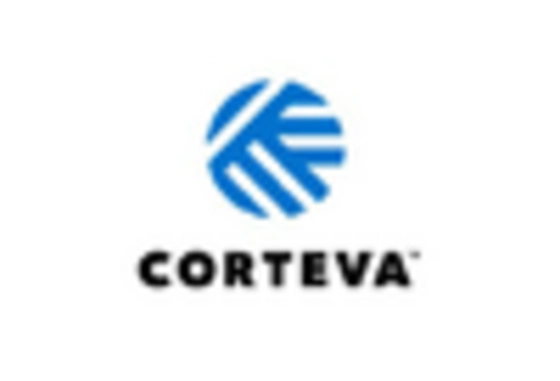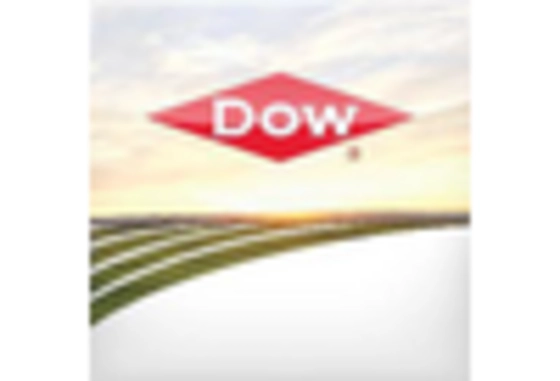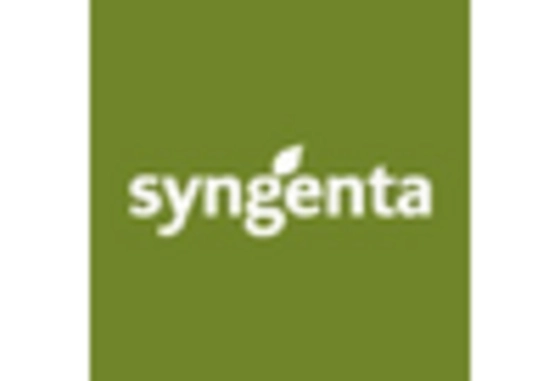Advancements in Biotechnology
The Commercial Seed Market is significantly influenced by advancements in biotechnology. Innovations such as genetic modification and gene editing are enabling the development of seeds with enhanced traits, including drought resistance, pest tolerance, and improved nutritional profiles. These biotechnological advancements are crucial in addressing the challenges posed by climate change and food security. In 2025, it is expected that biotech seeds will constitute a considerable portion of the Commercial Seed Market, as farmers increasingly adopt these innovative solutions to improve crop resilience and productivity. The ongoing research in biotechnology is likely to lead to the introduction of new seed varieties that can thrive in adverse conditions, thereby supporting sustainable agricultural practices and meeting the demands of a growing population.
Rise of Precision Agriculture
The integration of precision agriculture techniques is transforming the Commercial Seed Market. Farmers are adopting advanced technologies such as GPS, drones, and soil sensors to optimize their planting strategies and enhance crop yields. This shift towards data-driven farming practices allows for more efficient use of resources, including seeds, fertilizers, and water. As a result, the demand for seeds that are compatible with precision agriculture methods is on the rise. In 2025, it is anticipated that the precision agriculture segment will significantly influence the Commercial Seed Market, as farmers seek to maximize productivity while minimizing environmental impact. This trend not only supports sustainable farming practices but also encourages seed companies to develop products that align with these innovative agricultural techniques.
Growing Interest in Organic Farming
The Commercial Seed Market is witnessing a growing interest in organic farming practices. As consumers become more health-conscious and environmentally aware, the demand for organic produce continues to rise. This trend is prompting farmers to seek organic seeds that comply with certification standards, thereby expanding the market for organic seed varieties. In 2025, the organic seed segment is projected to capture a larger share of the Commercial Seed Market, reflecting a shift towards sustainable agricultural practices. This increasing interest in organic farming is likely to encourage seed companies to invest in the development of organic seed lines, catering to the evolving preferences of both farmers and consumers. The emphasis on organic farming not only supports biodiversity but also promotes soil health, further enhancing the appeal of organic seeds.
Increasing Demand for High-Yield Crops
The Commercial Seed Market is experiencing a notable surge in demand for high-yield crop varieties. This trend is driven by the need to enhance food production to meet the nutritional requirements of a growing population, which is projected to reach approximately 9.7 billion by 2050. Farmers are increasingly seeking seeds that offer better resistance to pests and diseases, as well as improved adaptability to varying climatic conditions. In 2025, the market for high-yield seeds is expected to account for a substantial portion of the overall seed market, reflecting a shift towards more productive agricultural practices. This demand is likely to stimulate innovation within the Commercial Seed Market, as companies invest in research and development to create superior seed varieties that can thrive in diverse environments.
Expansion of Seed Distribution Networks
The Commercial Seed Market is benefiting from the expansion of seed distribution networks. Improved logistics and supply chain management are facilitating better access to quality seeds for farmers, particularly in developing regions. This expansion is crucial for enhancing agricultural productivity and ensuring food security. In 2025, it is anticipated that the growth of distribution networks will play a pivotal role in the Commercial Seed Market, as it enables farmers to obtain the seeds they need in a timely manner. Additionally, the rise of e-commerce platforms is further enhancing seed accessibility, allowing farmers to purchase seeds directly from suppliers. This trend not only supports the growth of the seed market but also empowers farmers by providing them with a wider range of seed options, ultimately contributing to improved agricultural outcomes.

















Leave a Comment